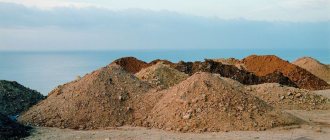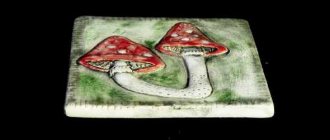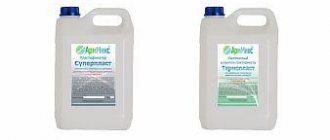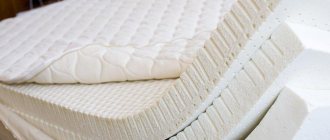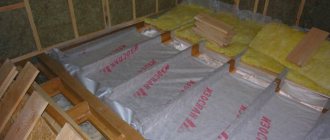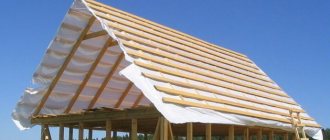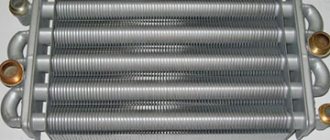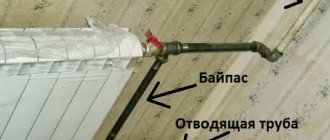Clay is a natural material formed through natural gravity; its characteristics depend on the components included in its composition. For the construction of objects that are operated under the influence of strong heat and open flame, a special type of this material is chosen. Fireclay is also called fireclay. To produce it, zircon or corundum silicate or alumina are used. The raw materials are placed in a drum or oven and fired at a temperature of +1500 degrees C. This way, water and impurities are evaporated, and the material is sintered into crumbs, the diameter of which varies from 0.5 to 2.5 mm. This technology creates high heat-resistant and fire-resistant qualities of fireclay.
Important! There are several types of fireclay. The quality of a particular material depends on the raw materials, firing technology, and additives. Some types of fireclay are used for the production of bricks, others are used to prepare plaster solutions for heating appliances, and others are used for sculpting and casting sculptures and dishes.
Advantages of refractory
Heat-resistant, fire-resistant fireclay clay has been known to man for several thousand years. Since then, its scope has changed little. Among other natural materials with the same properties, this refractory was chosen due to the following advantages:
- coatings and products made from it do not collapse, do not crack, retain their original shape, and are characterized by a long service life;
- environmentally friendly natural sedimentary rock does not harm human health and the environment;
- clay has high adhesive qualities, it adheres perfectly to metal, stone, brick and other surfaces;
- products and coatings are able to withstand heat stably and for a long time;
- the material is vapor permeable.
Varieties
Optimal fat content
To check the fat content of this main component of the masonry mortar, there is an elementary way. You need to take 0.5 liters of clay and mix it with water until the consistency becomes like stiff dough. Then the resulting mass must be thoroughly kneaded and formed into a ball with a diameter of 4–5 cm. When it dries, it must be placed between two planks and squeezed.
If as a result the ball cracks when squeezed halfway, its fat content is high, which means the mixture does not have enough sand. If it disintegrates almost immediately, you need to add clay. In the event that cracks appear when the ball is compressed by a third, the composition of the oven mixture is selected ideally.
To ensure the reliability of the future furnace, the clay solution for laying it must be prepared from thoroughly cleaned components and have normal or high fat content.
The obvious advantage of the solution, the ingredients of which are carefully selected and dosed, is that the masonry will have a neat appearance due to the thin seam. In addition, a stove mixture of normal fat content will provide the structure with sufficient reliability and durability. True, such a solution still has one drawback: such a solution is not resistant to environmental humidity.
Disadvantages of refractory
Like any material, refractory clay has not only advantages, but also disadvantages:
- the material has a high price;
- The preparation of the solution is carried out strictly according to technology.
On a note! In large chain construction stores, such as Leroy Merlin or Your House, you can purchase fireclay clay at a more affordable price. There it is usually sold in 20 kg bags. The second option to save on the purchase of raw materials is to contact the sales department of the building material manufacturer itself. Also, the cost will be significantly lower when purchasing a large batch in bulk.
Possible problems
Fireclay composition for masonry has practically no negative reviews from builders; it is difficult to imagine a more reliable solution for stoves. This material is very durable, lasts a long time, without compromising reliability. It is environmentally friendly, safe and does not deteriorate from external influences of temperature and moisture. Adhesion is at the highest level.
However, all these advantages do not exclude the presence of some disadvantages that are worth considering:
- the cost of fireclay composition is quite high, the production of this material is associated with technical difficulties;
- the dust of the composition is very fine and can damage the respiratory system if protective equipment is not used;
- the solution cannot be stored for a long time, you need to carefully calculate how much of the composition you need on a particular day;
- the required consistency can be difficult to achieve even for a professional: after three days of swelling, the composition may turn out to be completely different from what is needed, this is influenced by the level of humidity and temperature;
- To achieve the ideal consistency of thickened sour cream without lumps, you need to take your time, add water in small portions, control the amount of components and the resulting composition so that it does not go to waste and is of really high quality.
Composition of fireclay refractory
In stores, fireclay is sold as a dry mixture in bags. It is produced from raw materials with a high content of highly dispersed hydroaluminosilicates. In addition to these components, refractory clay contains:
- Na sodium;
- Ca calcium oxides;
- K potassium;
- Fe iron;
- Mg magnesium;
- aluminum oxides and other components depending on the type of raw material.
When purchasing, you need to pay attention not only to the composition, but also to the expiration date. Kaolin, which is part of the building material, loses its properties over time. Expired goods cannot be used.
Attention! When choosing refractory clay for work, pay attention to mortar. This is a combination of numbers in the marking. The higher the values, the more pronounced the fireproof qualities of the materials are. Other symbols and letters may vary. As a rule, the instructions on the packaging indicate the scope of application, down to the type of bricks that can be laid.
The composition and instructions for use are printed on the packaging
Basic properties of fire-resistant building materials
When choosing a material for a specific job, you need to pay attention to its technical characteristics:
- grain sizes;
- firing temperature: at lower rates, fireclay absorbs up to 25% of moisture, at higher rates – up to 10%;
- humidity indicators, high-quality refractory should not contain more than 5%;
- temperature limit of the building material, the maximum limit is +1850 degrees C.
Note! To ensure that the dry mixture does not lose its technical characteristics, it must be stored under special conditions. The main danger to building materials is humid air. The second risk factor is long-term storage. Mostly, the shelf life of clay refractory is 36 months.
Fireplace made of fireclay bricks and fireproof clay mortar
The difference between chamotte and ordinary ceramic bricks
Fireclay brick cannot be confused with any other block, even with other refractories. Mostly yellow or even light yellow in color, with a whitish tint. The main difference between fireclay bricks is the high content of aluminum oxide in various chemical forms and modifications.
In comparison with ceramic bricks, with a high content of iron oxide and silicon oxide, fireclay bricks have their own characteristics that affect their durability:
- The surface of the block is highly porous, but these pores are very small; the solution penetrates poorly into them, but moisture and air penetrate well;
- The coefficient of thermal expansion of each brick is strictly individual, which will require difficult and painstaking selection of the composition of the mortar for masonry;
- The refractoriness and ductility of fireclay bricks largely depends on the operating mode of the furnace, and not on the composition of the mortar or the method of laying.
Advice! For lining one furnace, you cannot use fireclay from different batches or a set of randomly selected bricks; in extreme cases, different types can be converted into broken or fireclay powder.
Scope of application
Fireclay can be used alone or mixed into plaster solutions. Fireclay is not only thermally resistant, but has deep brown and brown shades and an impressive texture. Aesthetic qualities significantly expand the scope of application of the material:
- production of construction refractories;
- interior design using fireclay plaster;
- casting and sculpting of souvenirs, dishes, figurines;
- preparation of solutions for the construction of stoves and fireplaces;
- for the formation of heat-insulating screens.
For designers, sculptors, craftsmen, and decorators, refractory clay opens up endless possibilities. You can add various fillers and dyes to it. The plastic material can take on the most intricate shapes. The spectacular texture brings an element of uniqueness. In construction and renovation, fireclay is characterized by local use.
Important! The names of the material in the packaging may be different: VITEB, PGA, PHB. They are produced according to different specifications. It is important to carefully study the instructions themselves.
Decorating the walls of premises with fireclay plaster
Required Tools
For plastering you will need:
- Master OK. For application, uniform distribution of the solution over the surface.
- Metal scissors. Needed for cutting reinforcing mesh.
- Spatulas of different sizes. Used for distributing and smoothing the mixture in corners and in narrow places.
- Grater, ironer. The first tool is taken for rough grouting. The second has the same shape, but the coating is not mesh, but rubber - for sanding before painting.
- Chisel. It will be needed to apply notches to the cement coating. Suitable if you have to cover a stove without reinforcement.
- Hammer, metal brush.
- Brushes for applying primer and paint.
- Construction mixer. Speeds up mixing of the solution.
- Plumb line, level, tape measure, pencil.
- Plastic film to cover the floor and wall corners from particles of the mixture and paint.
If the walls of the furnace are uneven, then you will have to install a beacon, and more than one. By plastering taking into account the beacons, it will be possible to achieve alignment of the walls and corners of the stove.
The process of mixing the solution
Preparing mortars for laying stoves and fireplaces, and plaster for decorating premises is in many ways similar to mixing conventional compounds. Application to the surface is also carried out using the same tools, namely two spatulas: with one tool the solution is placed on the surface and leveled, with the other to remove smudges. Other recipes are used to produce building ceramics and modeling compounds. But the general principle is this:
- the contents of the package are poured into the container;
- the powder is filled with a certain amount of water;
- swelling of the powder continues for 3 days;
- on the 4th day water is added, in some cases sand, in others additives;
- the mixture is stirred until smooth.
Attention! No matter how homogeneous the material may be as a result, when performing work it must be constantly mixed, not allowing the components to be distributed according to density. The quality of work largely depends on this.
Mixing the solution
Use Cases
Kaolin can be used for furnace masonry. It is also used as plaster and for making decorative items.
In addition to being used for decorative purposes, chamotte clay is actively used when laying stoves and fireplaces
When building stoves, they look at the markings applied to the surface of the products. Usually the letter "Ш" is indicated. The material most often used is for masonry of the firebox, since its cost is high, so it is impractical to use it for the rest of the work. They lay it on special clay. Its characteristics are the same as those of brick.
For use in plaster, large and medium spatulas are used. It is necessary to apply the material in a layer of no more than 2 mm. As soon as it dries, you can begin finishing work.
Fireclay fireclay has a unique texture and composition. That is why designers paid attention to it and began to use it to produce unique blanks. These can be ceramic dishes, original figurines. To ensure greater plasticity, various impurities are added. The finished products look beautiful, and they are absolutely safe. Most often, fireclay chips are used as additives in the production of decorative objects. It is added to plastic clay.
Mortar for laying fireplaces and stoves
Before starting work, you need to decide which part of the heating device you will fold at one time. You need to cook a strictly defined portion. Calculations are made as follows. Each brick requires approximately 1 kilogram of mortar. Therefore, to lay 30 bricks you will need to mix the mixture from a standard 2 kg bag. If 1 cubic meter is used at a time, 5 packages will be required. The work is carried out according to a standard scheme using quartz sand. The proportion of clay and sand for a large oven is one to three, respectively, for a small hearth – one to two. If you are using a ready-made product from a store, quartz filler will not be required. Process Features:
- sand and clay or the finished product is poured into a container;
- water is also added there, it saturates the powder, when it is completely wet, another liquid is added, its surface should be at a distance of one phalanx of a finger from the wet mixture;
- the mixture settles for up to 3 days;
- on the 4th, stir the solution with a construction mixer until homemade sour cream becomes thick; if it is dry, add water; if liquid, add powder;
- Having achieved the desired density and uniformity, you can begin work.
The technology of laying on fireclay clay does not differ from the usual technique. Experienced masters of masonry heating devices recommend making seams no thicker than 1 centimeter. The structure must dry completely, this will last from 2 days depending on the temperature and humidity. Experienced craftsmen believe that a folded stove contains at least one barrel of water. To completely evaporate it, after the outer layer has dried, the device needs to be heated little by little 2 times a day with a small armful of firewood. In summer, this procedure lasts from 5 to 10 days, in winter – up to three weeks. Until the stove is completely dry, you cannot heat it to heat the premises. It is also worth understanding that heating structures are not only a source of comfort in the home, but also danger. If the master is not confident in his knowledge, it is better to use the services of professionals.
Construction of furnaces
Features of stove plaster repair
There are several reasons for the formation of cracks on the surface:
- Incorrect masonry, due to which the structure heats up unevenly in places. This will require radical repairs - refurbishment of the stove.
- Using ordinary plaster that is not fire resistant. You will have to replace the coating with a heat-resistant one. An alternative is to add fireclay powder to the clay solution.
- The doors were loose. Reinstall with metal mesh reinforcement.
- Failure to comply with plastering technology.
If minor repairs are required without completely replacing the entire coating, then the work order is as follows:
- We clean the layer of whitewash or paint.
- We remove the cracked part of the plaster with a chisel to the brickwork.
- We remove all excess with a metal brush.
- We prime the area. An alternative to primer is cement diluted in water with a liquid consistency.
- Mix the solution. It is better to choose the same composition as was used previously.
- Apply the solution in small portions onto the moistened area.
- Let it set a little and rub it in.
- To secure doors that are loose, take them out. We clear the area from falling pieces of mortar.
- We make new holes for fasteners. For reinforcement, we wall up pieces of wire.
- We wrap the door frame with asbestos cord and put it in place, securely fixing it with wire.
- The clay mixture is applied.
- The treated areas are rubbed and polished.
The procedure for preparing chamotte plaster for finishing and decoration
The plaster is prepared a little differently:
- refractory and sand are poured into the container in a ratio of two to seven, respectively, only fine-grained sand is used, the proportion is strictly maintained, otherwise there is a risk of cracking;
- the powder is poured with water and left for three days;
- Portland cement is poured into the swollen solution in a proportion of one to two parts of clay;
- stir the material with a construction mixer.
It is important to use the entire volume of plaster within the shortest possible time. Further, the solution loses its technological qualities. If work is planned for several days in a row, then a new portion of plaster is prepared every day. In addition to the above ingredients, you can use others:
- the addition of PVA glue will ensure eradicated drying; under natural conditions, the finishing layer based on fireclay releases moisture within two days;
- liquid fiberglass will provide additional plasticity to the mass and strength;
- Rock salt will add strength and speed up drying.
Interior decoration with fireclay refractory in retro style
Installation procedure
The beginning of the masonry process should be careful marking. An excellent help will be the so-called dry laying, when they select bricks, adjust them to each other and set the size of the gap between the bricks. Upon completion of dry laying, the bricks are removed in the order they appear in the test laying. Do not forget that the seam should be covered with the top brick, which will provide greater reliability to the masonry
Particular attention should be paid to the quality of the seams to avoid problems after completion of the work.
The quality of the solution preparation directly affects the thickness of the seam of the refractory masonry. Accordingly, seams according to this indicator are divided into four groups:
- Category 1 - seam thickness less than 1 mm;
- Category 2 - the seam is 2 mm;
- Category 3 - the seam is 3 mm;
- Category 4 - seam thicker than 3 mm.
The category of masonry is determined by the temperature conditions for using the masonry. The higher the planned temperature, the thinner the seam should be, and the more thoroughly the solution is mixed. Means for checking the quality of refractory brick masonry. The first step is to control the seam category. To do this, use a special probe with a width of 15 mm and a thickness equal to the thickness of the seam. Such a probe should not penetrate the seam to a depth of more than 20 mm.
No masonry is complete without tapping each brick with the handle of a trowel. This ultimately leads to uneven masonry. The defect must be corrected while the solution is fresh enough. To ensure even horizontal laying and equal width of seams, order strips are used. A thin, durable cord is attached to them, which sets the correct styling parameters.
Each subsequent layer is placed along a cord stretched on nails inserted into a fresh seam. At each stage of the process, you should carefully monitor the uniform distribution of the mortar between the bricks. Uneven distribution significantly degrades the performance of refractory masonry. As with conventional masonry, the brick should be moistened generously. Otherwise, the brick will actively suck water from the mortar, thereby significantly worsening its characteristics.
The best result will be if the bricks are kept in a container of water for some time before laying. This procedure will clean the material from dust and saturate it with water. Laying refractory bricks using properly prepared mortar is not an easy process, but if everything is done according to the rules, your stove or fireplace will delight the eye with beauty and the body with beneficial warmth for many years.
Mortar for designer ceramics
The production of ceramics from refractory clay can be done in two ways: with firing and without this process. But work begins with preparing the solution:
- fireclay and ordinary clay are placed in the container in a ratio of six to four, respectively;
- materials are filled with water and left for several days;
- the solution is thoroughly mixed with a mixer to a thick consistency - for castings;
- the material is poured into molds and dries for several days, depending on the size and geometry; PVA glue can be used to speed it up;
- the frozen mass is removed from the mold and modified according to the design.
For sculpture, a mixture of a thicker consistency is mixed so that it can be fixed to the frame. Adding liquid glass at 3% of the total volume will simplify the work. If firing is planned, it is performed no less than two days after finishing decoration. The temperature should not exceed +1320 degrees C, after which the melting stage begins.
Garden decor made of fireproof clay
The procedure for preparing a clay solution for work can be seen in this video:
Reinforcement
Reinforcement is a necessary stage of construction aimed at increasing the strength of the plaster. Prevents peeling and falling off of finish.
It is customary to add to the mixture (optional):
- asbestos fiber;
- hemp;
- slag wool;
- small fiberglass;
- chaff
Before applying the solution, it is recommended to reinforce the product with metal mesh.
Reinforcement fasteners for stoves with curved walls, where the plaster layer is more than 1.5 cm, are required.
A steel mesh with a cell size of up to 20 mm is suitable for this.
Mounting to the wall is carried out in two ways:
- Nails that are driven into masonry joints at a slightly angled angle. The length of the nails is 10–11 cm. The vertical fixation step is every 2–3 brick rows, and horizontally every 15 cm. You don’t need to hammer it all the way in, but so that the head remains 5 mm on the surface.
- The wire that was laid during laying. Wire material – copper, stainless steel, annealed nichrome. It is tied tightly to the reinforcing mesh.
There is also an old-fashioned way of reinforcing with burlap or gauze. The burlap is dipped into a semi-liquid solution so that it is well saturated. You need to cover the walls on top of the mortar. It is important to smooth it thoroughly so that there are no bubbles or dents.
But this method is unacceptable if heating is carried out with coal.


